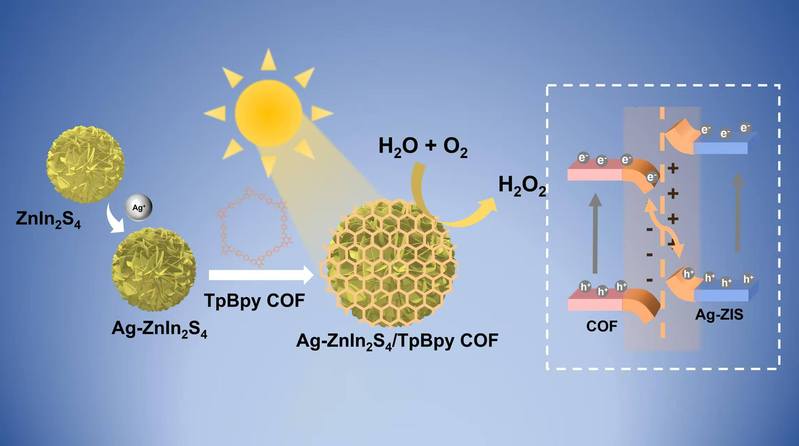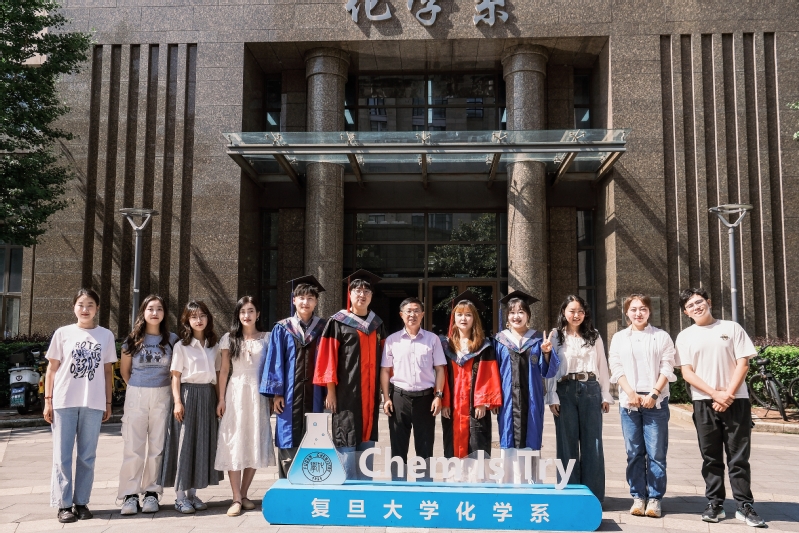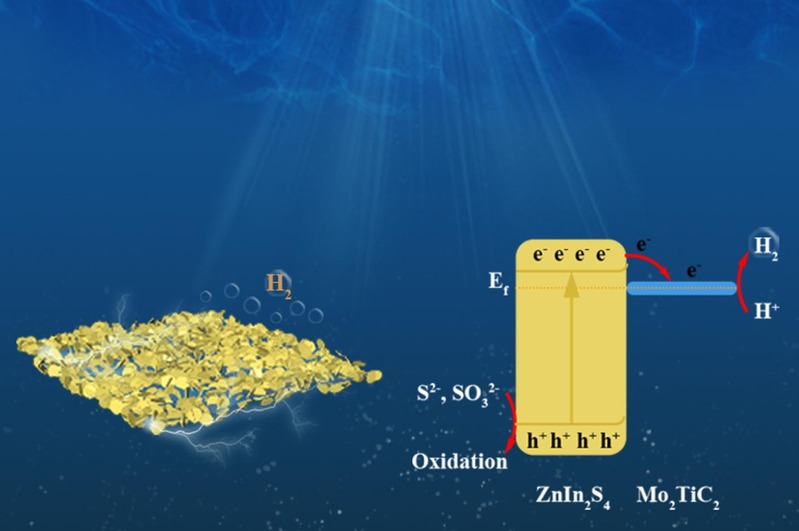Against the backdrop of energy scarcities and ecological concerns, the process of photocatalytic hydrogen evolution emerges as a critical method for transforming solar energy into chemical energy. Central to this technology is the crafting of photocatalysts that are not only efficient and durable but also economically viable. The key to creating photocatalysts that boast superior hydrogen production capabilities lies in enhancing the separation and transfer of photo-generated electrons and holes. This study introduces a binary heterojunction photocatalyst, featuring a combination of Cd0.5Zn0.5S and Ti3C2 MXene, synthesized via an in situ hydrothermal method. In the composite, slender Cd0.5Zn0.5S nanorods are uniformly coated over the surface of single layer Ti3C2 nanosheets, forming a Schottky heterojunction at the material interface. This structure enhances the separation efficiency of photo-generated electrons and holes, thereby improving the utilization of light. With 0.5 wt% (mass fraction)of Ti3C2 MXene incorporated, we observed a peak photocatalytic H2 generation rate of 15.56 mmol∙g-1∙h-1, outperforming the baseline Cd0.5Zn0.5S by 2.56 times. Notably, the photocatalytic efficiency remained largely unchanged after five cycles.This composite achieved the highest apparent quantum efficiency (AQE) of 18.4% when exposed to 350 nm UV light. Various characterization techniques, including in situ X-ray photoelectron spectroscopy (XPS) and femtosecond transient absorption (fs-TA) spectroscopy, along with density functional theory (DFT) calculations, have further substantiated that the formation of a Schottky heterojunction at the interface is crucial for enhancing the photocatalytic hydrogen evolution performance of the composite material. This paper demonstrates the effectiveness of the novel carbon based material MXene as a co-catalyst for improving the performance of photocatalysts and offers a viable approach for the construction of MXene-containing photocatalytic hydrogen evolution catalysts.

文章链接: https://www.whxb.pku.edu.cn/EN/10.3866/PKU.WHXB202402016
 Wei-Lin Dai Group
Wei-Lin Dai Group



